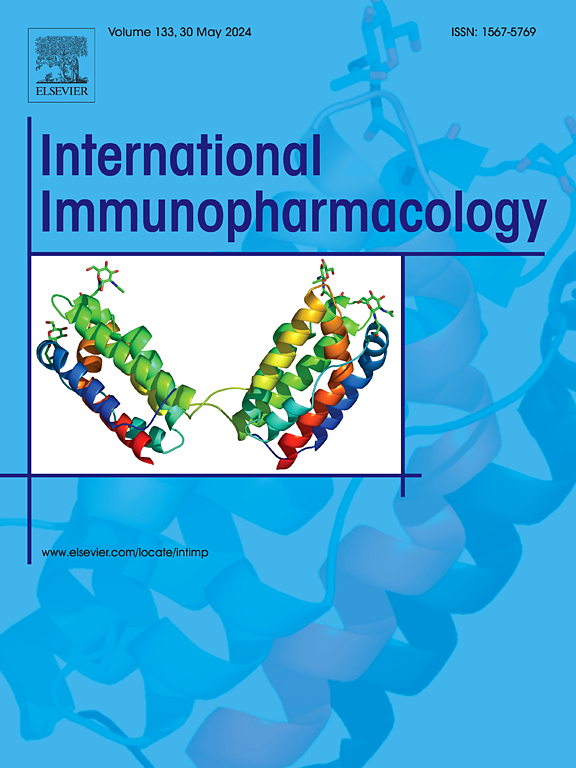Leveraging readily available clinical data with machine learning to predict first-line immunotherapy outcomes in non-small cell lung cancer
IF 4.7
2区 医学
Q2 IMMUNOLOGY
引用次数: 0
Abstract
Background
Immune checkpoint inhibitors (ICIs) are essential first-line treatments for recurrent or metastatic non-small cell lung cancer (NSCLC). However, predicting their effectiveness and the occurrence of immunotherapy-related adverse events (irAEs) remains challenging.
Methods
This retrospective study involved NSCLC patients who received first-line ICI therapy at China-Japan Friendship Hospital in Beijing, China, between October 29, 2018, and July 10, 2024. We employed five machine learning models to predict treatment responses to ICIs and the occurrence of irAEs.
Results
A total of 397 NSCLC patients who received first-line ICIs were included in the analysis, with 277 patients in the train-validation cohort and 120 in the test cohort. The neural network and gradient boosting models were the most effective for predicting treatment responses, achieving AUC values of 0.87 and 0.84, respectively. For predicting irAEs, random forest and gradient boosting emerged as the top performers, with AUC values of 0.84 and 0.80. Feature importance analysis identified key predictors such as red blood cell (RBC) counts and metastatic sites for treatment response, while metastatic sites and sex were significant for irAE prediction. In the validation cohort, the neural network demonstrated strong performance in predicting treatment response (AUC of 0.84, recall of 0.8406, and F1 score of 0.8007), while the random forest model excelled in predicting irAEs (AUC of 0.82, accuracy of 0.7417, precision of 0.7500, recall of 0.8261, and F1 score of 0.7862).
Conclusion
These findings highlight the potential for enhancing personalized treatment strategies for NSCLC patients undergoing first-line ICI therapy.
利用现成的临床数据和机器学习来预测非小细胞肺癌的一线免疫治疗结果
免疫检查点抑制剂(ICIs)是复发或转移性非小细胞肺癌(NSCLC)必不可少的一线治疗药物。然而,预测它们的有效性和免疫治疗相关不良事件(irAEs)的发生仍然具有挑战性。方法本回顾性研究纳入2018年10月29日至2024年7月10日在中国北京中日友好医院接受一线ICI治疗的非小细胞肺癌患者。我们采用了五种机器学习模型来预测对ICIs的治疗反应和irae的发生。结果共纳入397例接受一线ICIs治疗的NSCLC患者,其中训练验证组277例,试验组120例。神经网络和梯度增强模型预测治疗反应最有效,AUC值分别为0.87和0.84。对于预测irae,随机森林和梯度增强的AUC值分别为0.84和0.80,表现最好。特征重要性分析确定了治疗反应的关键预测因素,如红细胞计数和转移部位,而转移部位和性别对irAE预测具有重要意义。在验证队列中,神经网络在预测治疗反应方面表现较好(AUC为0.84,召回率为0.8406,F1评分为0.8007),而随机森林模型在预测治疗反应方面表现较好(AUC为0.82,准确率为0.7417,精度为0.7500,召回率为0.8261,F1评分为0.7862)。结论这些发现强调了在接受一线ICI治疗的非小细胞肺癌患者中加强个性化治疗策略的潜力。
本文章由计算机程序翻译,如有差异,请以英文原文为准。
求助全文
约1分钟内获得全文
求助全文
来源期刊
CiteScore
8.40
自引率
3.60%
发文量
935
审稿时长
53 days
期刊介绍:
International Immunopharmacology is the primary vehicle for the publication of original research papers pertinent to the overlapping areas of immunology, pharmacology, cytokine biology, immunotherapy, immunopathology and immunotoxicology. Review articles that encompass these subjects are also welcome.
The subject material appropriate for submission includes:
• Clinical studies employing immunotherapy of any type including the use of: bacterial and chemical agents; thymic hormones, interferon, lymphokines, etc., in transplantation and diseases such as cancer, immunodeficiency, chronic infection and allergic, inflammatory or autoimmune disorders.
• Studies on the mechanisms of action of these agents for specific parameters of immune competence as well as the overall clinical state.
• Pre-clinical animal studies and in vitro studies on mechanisms of action with immunopotentiators, immunomodulators, immunoadjuvants and other pharmacological agents active on cells participating in immune or allergic responses.
• Pharmacological compounds, microbial products and toxicological agents that affect the lymphoid system, and their mechanisms of action.
• Agents that activate genes or modify transcription and translation within the immune response.
• Substances activated, generated, or released through immunologic or related pathways that are pharmacologically active.
• Production, function and regulation of cytokines and their receptors.
• Classical pharmacological studies on the effects of chemokines and bioactive factors released during immunological reactions.

 求助内容:
求助内容: 应助结果提醒方式:
应助结果提醒方式:


